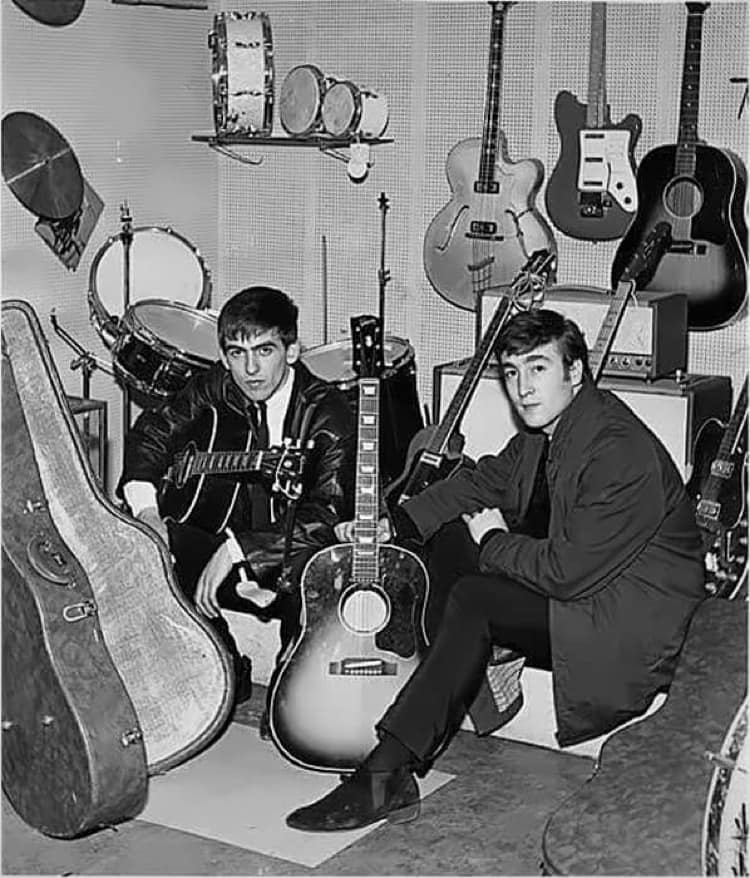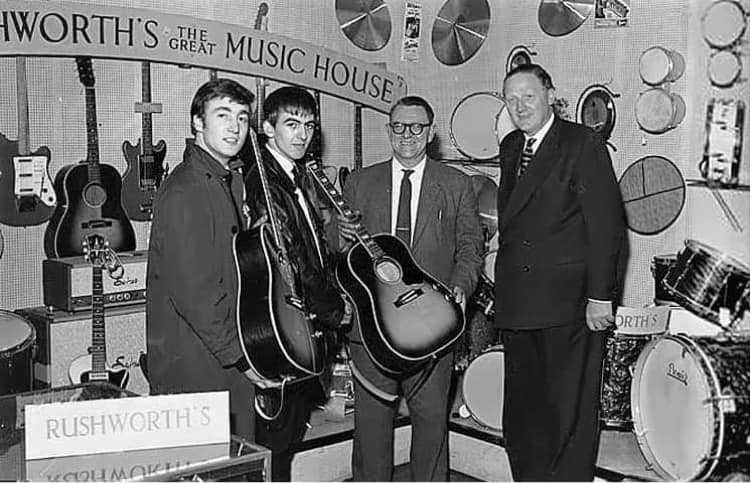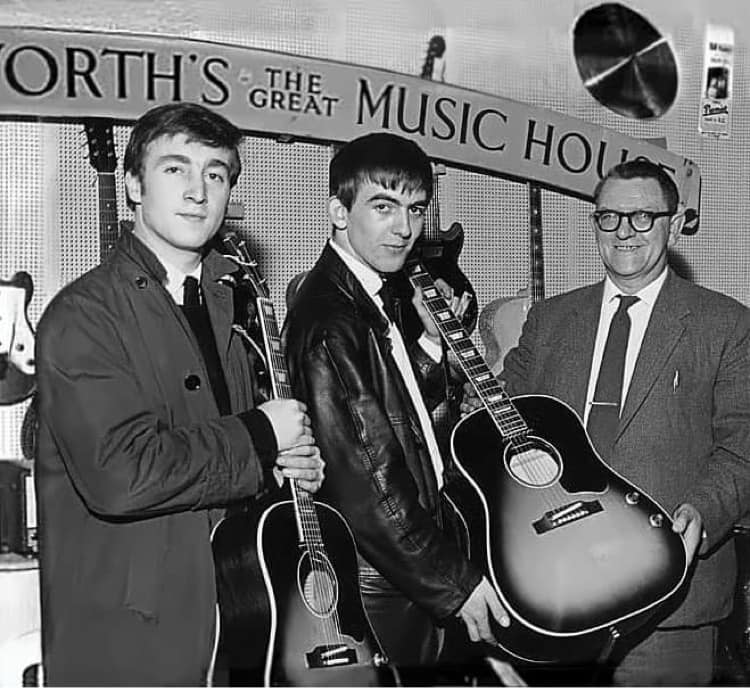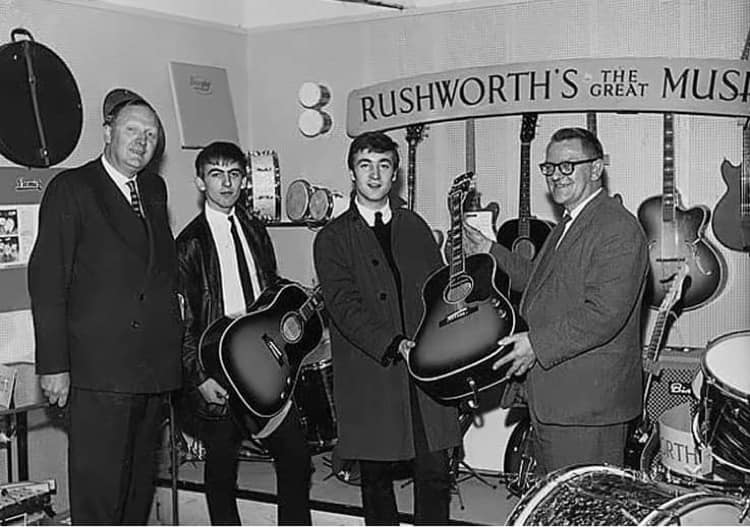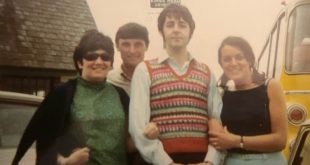On September 10, 1962, Brian Epstein purchased two nearly identical Gibson J-160E acoustic-electric “Jumbo” guitars for John and George at Rushworth’s Music House in Liverpool. John used his guitar to co-compose such Beatles classics as “I Saw Her Standing There,” “She Loves You” and “I Want to Hold Your Hand.”
Brian paid £161.05 for each of the Gibsons—about $450 then or $4,600 today.
After one of the Beatles’ 1963 holiday concerts at the Finsbury Park Astoria Theater in London, John’s Gibson was left behind by the band’s roadie, Mal Evans, who would later recall the moment “when I lost John’s guitar” as the lowest point in his early Beatles career. John would occasionally tease Evans “Mal, you can have your job back as soon as you find my guitar.”
The next four years in the guitar’s life are a mystery, but it resurfaced in 1967 at a San Diego guitar shop called the Blue Guitar, a popular hub of the city’s folk, rock and bluegrass scene. Taken as a trade-in, the Gibson was purchased for $175 by a young man named Tommy Pressley, a then-21-year-old carpenter’s apprentice and bluegrass player who frequented the shop. Neither the store personnel nor Tommy knew the guitar was John’s lost Gibson.
Two years later and needing money for a move to Northern California, Tommy sold the guitar for the same price to his childhood friend, John McCaw.
“I’d tried his guitar out for a couple of years and I always liked it,” said McCaw.
“And when he offered it to me, I jumped at the chance to buy it, because we were into country and western and bluegrass at the time and it was a perfect guitar for that music.”
For decades afterward, it hung on the wall of John’s house (and sometimes stored in a closet) in San Diego, much-loved and often played. With no hint that the guitar had a famous past, to McCaw it was simply a pleasant old Gibson that he enjoyed picking bluegrass on.
In April 2014, McCaw had just completed a group guitar lesson at a San Diego music studio when he noticed a 2012 copy of Guitar Aficionado magazine with Dhani Harrison on the cover. Inside was a photo of George’s 1962 Gibson J160-E (which is still owned by the Harrison Estate).
Noticing the closeness of the serial numbers, John and the studio owner contacted Beatles Gear author Andy Babiuk, who examined and authenticated the instrument as the missing Lennon Gibson.
“It was at that point that I realized I can’t keep the guitar,” McCaw said.
“It’s too big for me. It’s not going to fit in my house anymore.”
This guitar, which helped shaped the course of rock and roll history, was put up for auction in 2015.
“What you see today,” McCaw said about the scratched guitar at the auction, “is exactly the way it looked the day I bought it 46 years ago. All the little dents and nicks and dings that you see were all there.”
The guitar sold for $2.41 million.
Below are photos of the guitar, likely taken on September 10, 1962 but possibly taken in late 1963.
